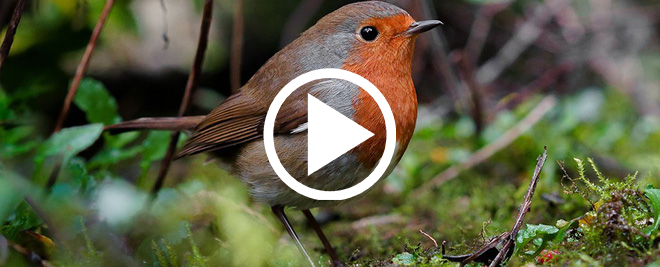The secret to this bird’s migration across a continent lies in its ability to perceive position over long distances through a “quantum” sense.
For a bird as small as the robin Erithacus rubecula on the outskirts, it’s a feat to traverse an entire continent from Russia to the warmer climates of southern and western Europe for winter migration. The secret to this bird’s success lies in its ability to perceive position over long distances through a “quantum” sense.
Scientists have long speculated that these birds can detect the Earth’s magnetic field. Now, this hypothesis has been confirmed by observing the unique light response of a particular protein found in a bird’s eye.
New study probed the response of cryptochromic proteins (a light receptor that helps birds respond to blue light) when exposed to continuous or cyclic blue light rays, in and out of a weak magnetic field . Scientific reports have provided compelling evidence for the existence and role of magnetic field sensing in the ability to determine direction.
Earlier this year, a team from the University of Tokyo also found a similar protein in humans. Some molecules in a protein chain with a single electron around the outermost orbital can accept another electron via a covalent bond, changing the properties of the molecule.
This process is influenced by the magnetic field. When turning on a blue light with a certain energy, the above bond will glow according to the new properties of the molecule. In other words, the quantum relationship between two electrons in some protein structures can use light as a signal to convey information about the change in the strength of the magnetic field, even with weak fields such as the Earth’s magnetic field. .
This is a startling discovery, potentially providing an answer to the question of why certain animals such as migratory birds have the ability to “see” landmarks in the Earth’s magnetic field, an ability to determine direction. particular.
The study also found the presence of similar cryptochromes in humans and chickens, a non-migratory bird that only roams the yard. In addition, the researchers also found this protein in pigeons. Although not a migratory bird, pigeons show an extraordinary ability to find their way back after a long journey. It is possible that this sensory protein is not an evolutionary product isolated from migratory birds. However, experiments also revealed that the magnetic field detection performance of cryptochrome in robins was stronger than that of chickens and pigeons.
What do birds “see” when they use this sense? Do they see blue more clearly when they are on the right track? Or just a vague feeling that it’s better to fly one way than the other? Maybe we can only imagine.


